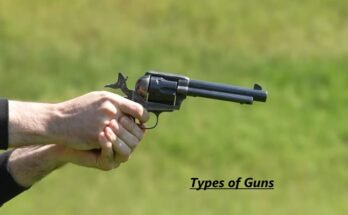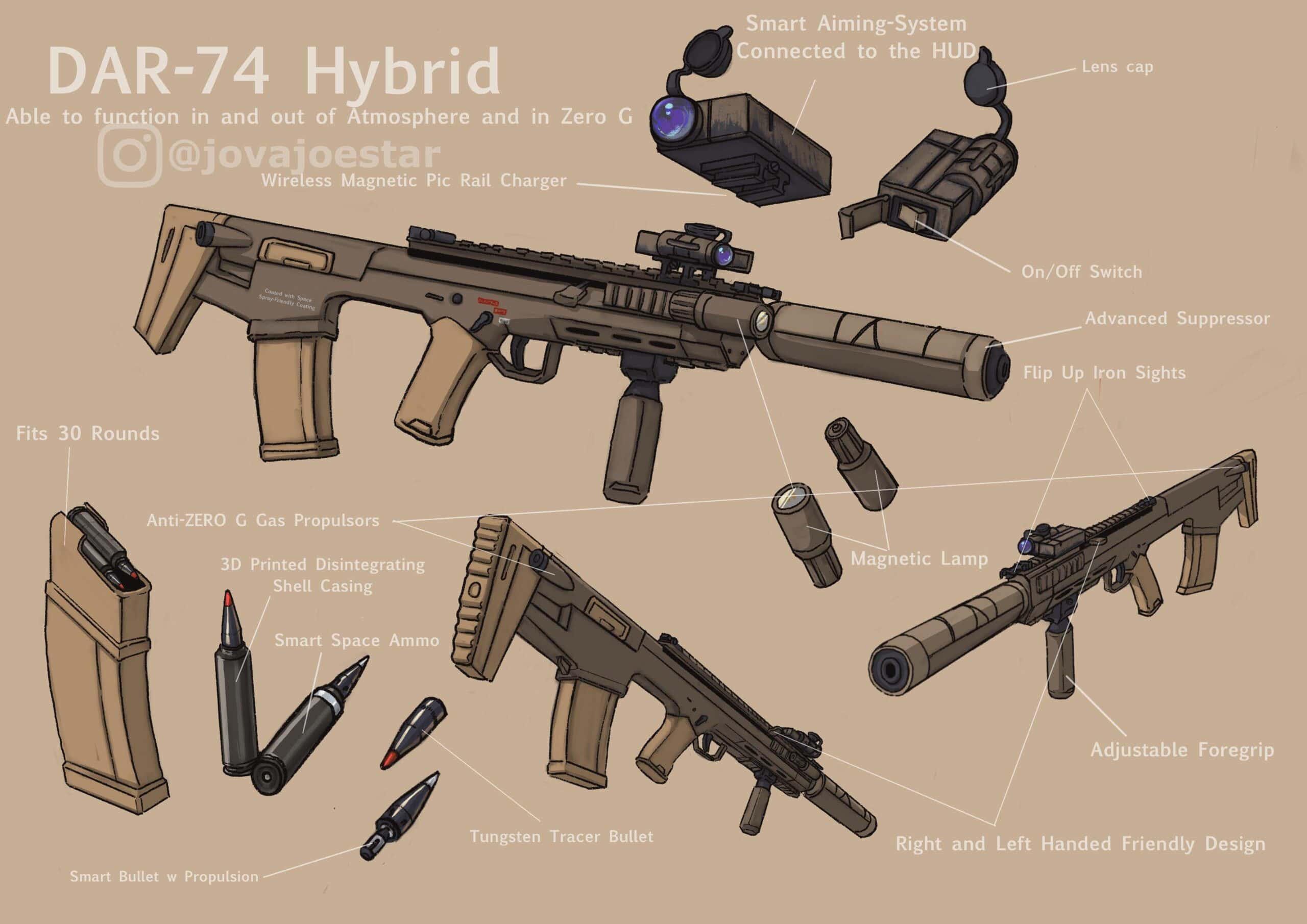Reduce recoil on your AR-15 by installing a quality muzzle brake and using a heavier buffer system. These modifications effectively manage the firearm’s recoil and improve shooting comfort.
Recoil can be a significant concern for AR-15 owners, impacting both accuracy and shooting enjoyment. A quality muzzle brake helps redirect gas to counteract the backward force, reducing felt recoil. Additionally, a heavier buffer system slows down the bolt carrier group’s movement, further diminishing recoil impact.
Implementing these changes not only enhances shooting comfort but also maintains firearm control during rapid fire. By focusing on these key modifications, AR-15 enthusiasts can enjoy a smoother shooting experience without sacrificing performance or reliability.
Choosing The Right Muzzle Device
Reducing recoil on your AR-15 is crucial for better accuracy. One way to achieve this is by choosing the right muzzle device. Muzzle devices are attached to the end of the barrel and play a significant role in recoil management. Here, we will explore the different types of muzzle devices and the benefits of each type.
Types Of Muzzle Devices
There are several types of muzzle devices available. Each type serves a specific purpose and offers unique benefits:
- Flash Hiders: Reduce the visible flash when you fire.
- Muzzle Brakes: Redirect gases to reduce recoil.
- Compensators: Minimize muzzle rise for faster follow-up shots.
Benefits Of Each Type
Understanding the benefits of each type can help you make an informed decision:
| Type | Benefits |
|---|---|
| Flash Hiders |
|
| Muzzle Brakes |
|
| Compensators |
|
Upgrading Your Buffer System
Reducing recoil on your AR-15 can enhance your shooting accuracy and comfort. One effective way to achieve this is by upgrading your buffer system. The buffer system helps manage the cycling of the bolt carrier group, which directly impacts recoil. Let’s explore how upgrading your buffer system can make a difference.
Buffer Weight Options
The buffer weight plays a significant role in recoil management. Here are some common buffer weights to consider:
- Standard Carbine Buffer (3 oz): Suitable for most AR-15 builds. Offers basic recoil reduction.
- H Buffer (3.8 oz): Heavier than the standard buffer. Provides better recoil reduction.
- H2 Buffer (4.6 oz): Ideal for rifles with heavier barrels. Further reduces recoil.
- H3 Buffer (5.4 oz): Best for rifles with suppressors. Maximizes recoil reduction.
Choosing the right buffer weight depends on your specific setup and shooting preferences. Heavier buffers slow down the bolt carrier group, reducing felt recoil.
Spring Selection
The buffer spring also impacts recoil. Different springs offer varying levels of resistance:
| Spring Type | Description | Recoil Effect |
|---|---|---|
| Standard Carbine Spring | Common in most AR-15 builds. Provides basic functionality. | Moderate recoil reduction. |
| Enhanced Power Spring | Offers greater resistance. Ideal for heavier setups. | Better recoil reduction. |
| Flat Wire Spring | Improves consistency and longevity. Suitable for high-performance builds. | Optimal recoil reduction. |
Using a stronger spring can complement a heavier buffer. This combination provides a smoother shooting experience.
Installing A Quality Compensator
Reducing recoil on your AR-15 can significantly improve shooting accuracy and comfort. One effective way to achieve this is by installing a quality compensator. A compensator can help manage the gases expelled when firing, reducing upward and rearward motion.
How Compensators Work
A compensator works by redirecting the gases that exit the barrel when you shoot. This redirection helps counteract the recoil and muzzle rise. By managing these gases, a compensator can keep your rifle more stable during rapid fire.
Compensators usually feature ports or holes on the top and sides. These openings allow gases to escape in a controlled manner. This action reduces the kickback you feel on your shoulder and keeps the muzzle steady.
| Feature | Benefit |
|---|---|
| Ports or holes | Reduces upward motion |
| Gas redirection | Decreases recoil |
| Easy installation | Quick improvement |
Top Compensator Brands
Choosing a reliable brand ensures you get a high-quality compensator. Here are some top brands to consider:
- SureFire: Known for durability and effectiveness.
- Strike Industries: Offers innovative designs and affordability.
- VG6 Precision: Famous for advanced engineering and performance.
- BattleComp: Praised for reducing both recoil and flash.
Each brand offers unique features, so choose one that fits your needs. Research and reviews can guide you in making the best choice.
Using A Vertical Foregrip
Reducing recoil on your AR-15 can improve accuracy and comfort. One effective way is by using a vertical foregrip. This small addition can make a big difference. It gives you better control and stability.
Grip Styles
There are different grip styles available for vertical foregrips. Each style suits various shooting techniques.
- Standard Vertical Grip: This is the classic choice. It provides a firm hold.
- Angled Foregrip: Offers a more natural hand position. It reduces strain and improves comfort.
- Stubby Grip: Compact and lightweight. Perfect for close-quarters combat.
Proper Installation
Ensuring proper installation is key to maximize benefits. Follow these steps for a secure fit:
- Align the foregrip with the rail system on your AR-15.
- Slide the grip into the desired position.
- Tighten the screws or locking mechanism.
- Test the grip for stability.
A well-installed vertical foregrip enhances control. It also helps in maintaining a steady aim.
Adjusting Gas System
Adjusting the gas system is a crucial step to reduce recoil on your AR-15. The gas system controls the rifle’s cycling and recoil. By fine-tuning this system, you can achieve smoother shooting and better control.
Gas Block Options
The gas block is a vital component of the gas system. It directs gas from the barrel to the bolt carrier group. There are several types of gas blocks available:
- Fixed Gas Blocks: These are simple and reliable. They do not offer adjustability.
- Adjustable Gas Blocks: These allow you to control the amount of gas. This helps in reducing recoil.
- Low-Profile Gas Blocks: These are compact and fit under free-float handguards. They are often used in custom builds.
Tuning The Gas System
Tuning your gas system involves adjusting the gas block. This can be done by following these steps:
- Ensure your rifle is unloaded and safe.
- Locate the adjustment screw on the gas block.
- Turn the screw to reduce or increase gas flow.
- Test fire the rifle and observe the recoil.
- Repeat the adjustments until you achieve minimal recoil.
Important: Always make small adjustments and test frequently. Over-adjusting can cause malfunctions.
Adjusting the gas system can significantly reduce recoil. It leads to a more enjoyable shooting experience.
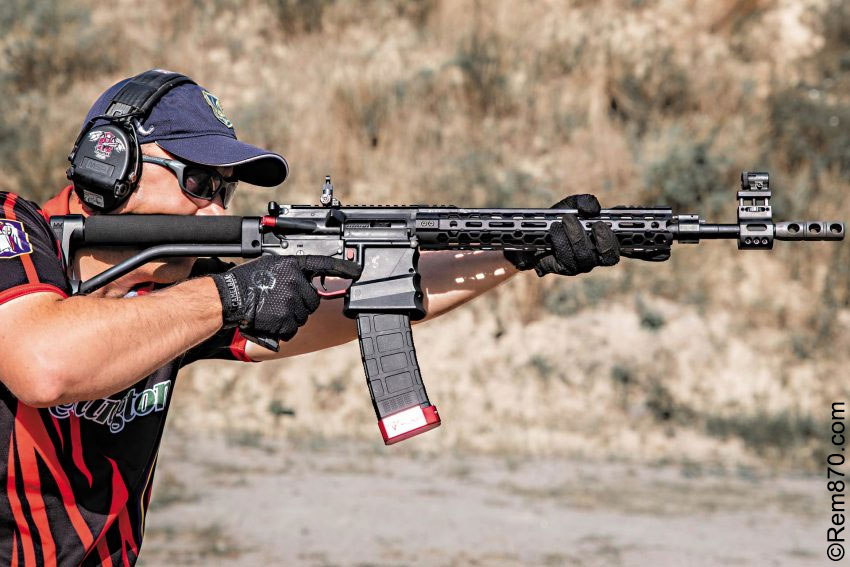
Credit: www.rem870.com
Practicing Proper Shooting Techniques
Learning how to reduce recoil on your AR-15 involves practicing proper shooting techniques. This includes adopting the correct stance and grip, and using effective follow-through methods. These techniques not only improve accuracy but also help in managing recoil.
Stance And Grip
Your stance and grip are critical in controlling recoil. Stand with your feet shoulder-width apart. Keep one foot slightly forward. This stance provides a stable base. Bend your knees a little for better balance. Ensure your body weight is evenly distributed.
Next, focus on your grip. Hold the rifle firmly but not too tight. Your dominant hand should grasp the pistol grip. Your other hand should support the handguard. Keep your elbows down and close to your body. This position helps absorb recoil effectively.
Follow-through Methods
Follow-through is essential for reducing recoil. After firing, maintain your sight alignment. Do not immediately look away. Keep the rifle steady and continue to hold it firmly. This technique helps in preparing for the next shot.
Practice trigger control as part of follow-through. Squeeze the trigger smoothly rather than jerking it. A smooth trigger pull minimizes movement and helps in controlling recoil.
Finally, practice regularly to perfect these techniques. Consistent practice helps in muscle memory development. This makes managing recoil easier over time.
Regular Maintenance And Cleaning
Regular maintenance and cleaning of your AR-15 can significantly reduce recoil. Keeping your firearm in top condition ensures smoother operation and less felt recoil.
Cleaning The Barrel
Cleaning the barrel is crucial for reducing recoil. A dirty barrel can cause increased friction, leading to higher recoil. Follow these steps:
- Use a bore brush to scrub the inside of the barrel.
- Run a cleaning patch soaked in solvent through the barrel.
- Repeat until the patch comes out clean.
- Finish by running a dry patch to remove any solvent residue.
Regularly cleaning the barrel helps maintain accuracy and reduces felt recoil.
Lubricating Moving Parts
Proper lubrication of moving parts is essential. Friction between metal parts can increase recoil. Ensure these parts are well-lubricated:
- Bolt carrier group (BCG)
- Charging handle
- Trigger assembly
Follow these steps to lubricate:
- Apply a small amount of gun oil to the moving parts.
- Spread the oil evenly using a clean cloth.
- Remove any excess oil to prevent dirt buildup.
Lubrication ensures smoother operation, which helps reduce recoil.
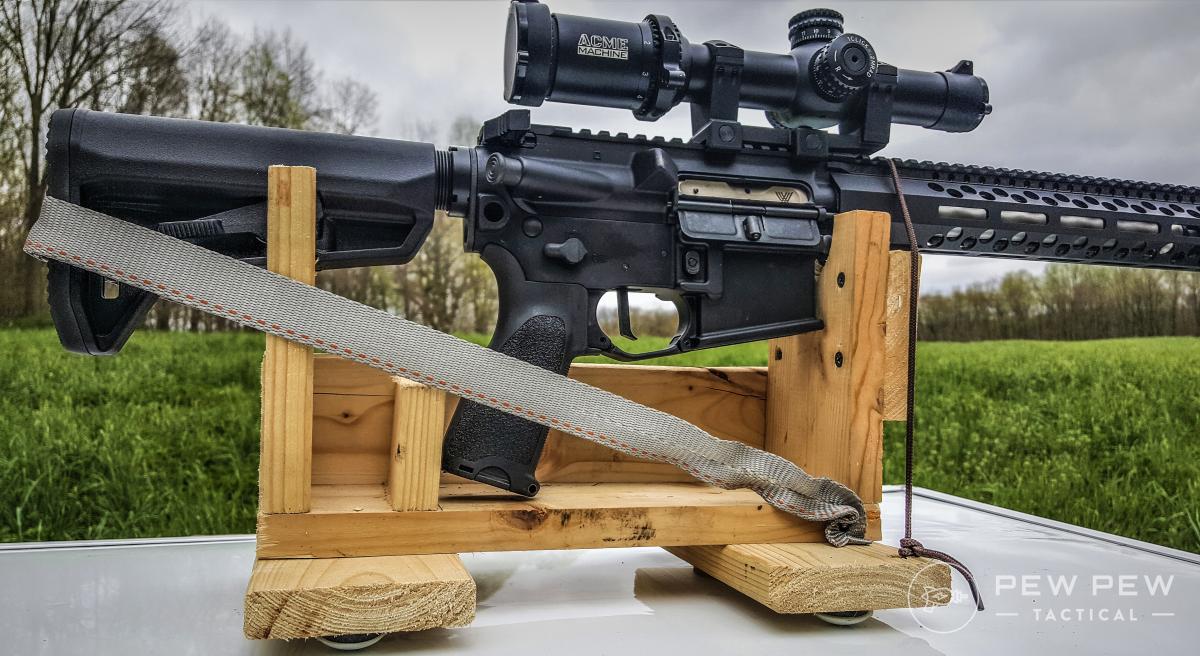
Credit: www.pewpewtactical.com
Exploring Advanced Accessories
Reducing recoil on your AR-15 can enhance your shooting experience. Advanced accessories can make a significant difference. Here, we explore some top-notch options.
Hydraulic Buffers
Hydraulic buffers can greatly lessen the felt recoil. These buffers use hydraulic fluid to absorb shock. It results in a smoother shooting experience.
Hydraulic buffers are easy to install. They fit in the same space as standard buffers. Here’s a quick comparison of benefits:
| Standard Buffer | Hydraulic Buffer |
|---|---|
| Basic recoil reduction | Enhanced recoil reduction |
| Simple design | Advanced shock absorption |
Recoil Reducing Stocks
Recoil reducing stocks can also help manage recoil. These stocks often have built-in mechanisms to absorb shock. It makes shooting more comfortable.
Some popular types include:
- Spring-loaded stocks
- Gel-filled stocks
- Adjustable stocks
Recoil reducing stocks are versatile. Many are adjustable for a custom fit. Here are some key features:
- Shock absorption
- Customizable length
- Enhanced shooting stability
Both hydraulic buffers and recoil reducing stocks can transform your shooting experience. Try these advanced accessories for better control.
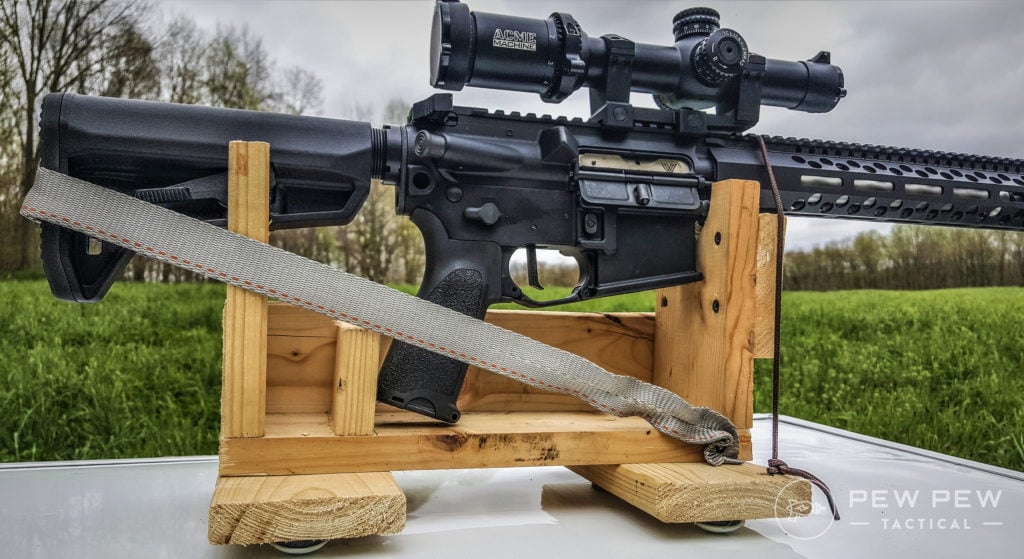
Credit: www.pewpewtactical.com
Frequently Asked Questions
What Are Common Methods To Reduce Ar-15 Recoil?
Common methods include using a muzzle brake, recoil pad, or adjustable gas block. Each option helps manage recoil differently.
How Does A Muzzle Brake Reduce Recoil?
A muzzle brake redirects gases to counteract recoil. This reduces the backward force felt by the shooter.
Are Recoil Pads Effective For Ar-15s?
Yes, recoil pads absorb energy, making shooting more comfortable. They’re easy to install and affordable.
Can An Adjustable Gas Block Help With Recoil?
An adjustable gas block fine-tunes gas flow, reducing felt recoil. This leads to a smoother shooting experience.
Conclusion
Mastering AR-15 recoil reduction is achievable with the right techniques and gear. Focus on grip, stance, and quality components. Practice regularly to refine your shooting skills. Investing in the right modifications can greatly enhance performance. Remember, consistency and proper maintenance are key to optimal results.
Enjoy a smoother shooting experience with your AR-15.
